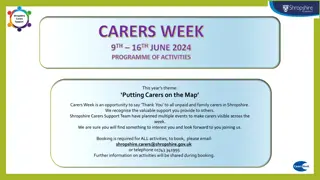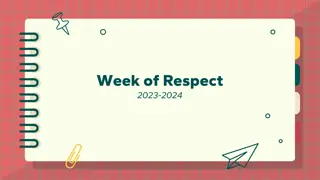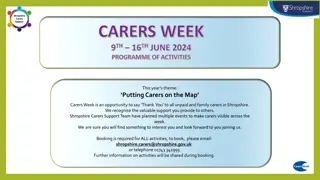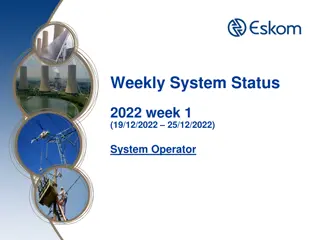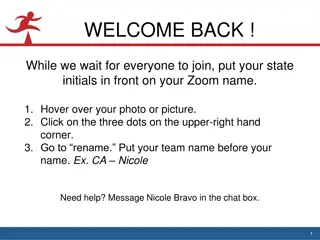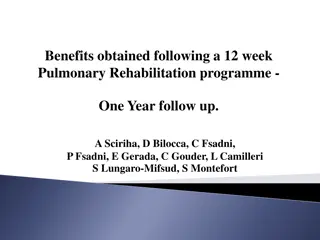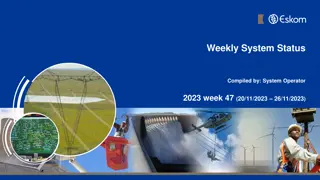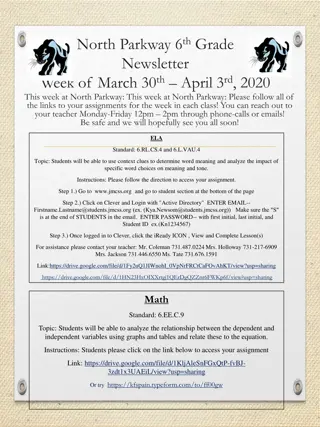
Agile Scrum Framework Overview
Understand the Agile Scrum framework which includes creating a product backlog, sprint planning, execution, review, and retrospective. Learn about the roles of Product Owner, Scrum Master, and team members in the Agile process. Explore the concepts of product backlog, sprint backlog, and potentially shippable increment in Agile development.
Download Presentation

Please find below an Image/Link to download the presentation.
The content on the website is provided AS IS for your information and personal use only. It may not be sold, licensed, or shared on other websites without obtaining consent from the author. If you encounter any issues during the download, it is possible that the publisher has removed the file from their server.
You are allowed to download the files provided on this website for personal or commercial use, subject to the condition that they are used lawfully. All files are the property of their respective owners.
The content on the website is provided AS IS for your information and personal use only. It may not be sold, licensed, or shared on other websites without obtaining consent from the author.
E N D
Presentation Transcript
Create Product Backlog Product Vision Product Backlog Scrum can be modeled with an activity diagram showing its steps Everything is built around a cycle called a sprint Because sprints repeat, the process is iterative Because each sprint produces a shippable product, the process is incremental Sprint Planning Sprint Backlog Sprint Execution Sprint Backlog Product Backlog Shippable Product Sprint Review Product Backlog Sprint Retrospective Project Not Done Project Done
Agile methods are built around a product backlog, containing high-level descriptions of the desired features of the product Items can be added to or removed from the product backlog at any time Some of the product backlog is chosen for a sprint Making the sprint backlog The sprint backlog is implemented, making a new shippable product A sprint review allows customers to give feedback on the product The sprint retrospective is used to figure out how to do the next sprint better
Product owner (PO) Responsible for what's in the product Customer representative to the other developers Updates the product backlog Scrum master (SM) Guides the team through the Scrum process Facilitator and coach Protects the team from outside interference Team members People who decide how to build the project and build it Typically, everyone works on everything
Product backlog A prioritized list of product features that haven't been implemented yet Product backlog items (PBIs) are the elements of this list Priorities are based on business value Sprint backlog Subset of PBIs Tasks needed to complete them Estimates of effort needed for each one Potentially shippable increment (PSI) Product that could be shipped to the customer (though maybe without all the desired features) A PBI on the sprint backlog that wasn't finished goes back into the product backlog
Product backlog creation The PO creates the product backlog for the first time, using customer input Product backlog refinement The PO constantly adds and deletes PBIs from the product backlog based on feedback from stakeholders Sprint planning The PO, SM, and other team members select PBIs, maybe with a particular sprint goal PBIs are chosen by priority, taking into account how much can be done by estimating the work for the tasks for a PBI Sprint execution Everyone performs the tasks to implement the sprint backlog PBIs Sprint review A product demo where stakeholders discuss what was added and how they feel about it Goal: improving the product Sprint retrospective The team discusses what went well, what didn't, and how the next sprint can be better Goal: improving the process
The product backlog is a prioritized list of PBIs Each PBI consists of Specification Priority Estimate of effort Acceptance criteria
PBI specifications can be less formal and more general than requirements in waterfall They could be traditional requirements statements, UI diagrams, use cases, user stories, bugs, design tasks, research tasks, etc. They start at broad levels of abstraction and are refined over time PBIs are refined into detailed, sprintable PBIs as needed, based on priorities Product backlogs should contain enough refined PBIs for two or three sprints
User stories are the most popular way of specifying features in Scrum User story format: As a <user role> I want to <goal> so that <benefit>. Examples: As a course scheduler I want to determine whether students can take other sections of a course so that I can see if I can cancel a section with students already enrolled in it. As a shopper I want to see whether an item is still on sale so that I can buy it more cheaply. As an internet user I want to secure my devices so that I can protect my private information. As an electric utility customer I want to see my usage over several years so that I can analyze it to budget my electricity costs more exactly.
User stories come at different levels of abstraction and size Large, abstract stories that would take months of coding are sometimes called epics Medium-sized stories that would take several sprints are sometimes called features Small, detailed stories that can be done in a single sprint are sprintable stories (or simply stories) Even sprintable stories usually aren't detailed enough to implement without additional conversations with stakeholders
In addition to the specification of functionality, every PBI should have a priority Priorities express how important the PBI is and can be expressed as a number or a rubric (low, medium, high, critical) The PO sets the priorities based on stakeholder feedback Dependencies also determine priorities: If X is needed for Y, then the priority of X must be at least as high as Y High-priority PBIs should be small enough to do in a single sprint
Each PBI must have an effort estimate High-priority, sprintable PBIs need precise estimates (such as person-days), to aid in sprint planning Low-priority, abstract PBIs are further from sprintable status and only need rough estimates (small, medium, large, gigantic) As PBIs are refined, their effort estimates need to become more precise
How do we know when a PBI is done? Acceptance criteria are checks a user can do to see if a PBI is finished and correct Often, these form a test suite used by developers Following the same pattern of steady refinement, high- priority PBIs should have detailed acceptance criteria These acceptance criteria might be further refined during the sprint
Refining or grooming the product backlog means: Adding, removing, or modifying PBIs Making PBIs nearing the top of the product backlog more detailed Re-estimating and re-prioritizing PBIs Adding acceptance criteria to PBIs Refinement happens during sprint review It should happen at least once during a sprint to make sure there are enough sprintable stories for the next sprint POs will be managing the product backlog through Trello
Two pieces of information are needed: The size of the job and the speed of the team PBIs are estimated by story points or ideal hours One or two story points is supposed to be how much effort the smallest stories take Bigger stories are estimated relative to that size An ideal hour or a person hour is the amount an average developer can accomplish in one uninterrupted hour of work Story points are more commonly used, since they're easier to estimate
Velocity is the amount of work done per sprint After a sprint, story points or ideal hours can be added up to see how much got done Past velocities can be used as a guide for how many story points can get done when planning the next sprint Ideally, tracking this information will help get better estimates of story points and ideal hours for other stories and also a better estimate of team velocity
In sprint planning, teams refine their estimates of high-priority PBIs before finalizing the sprint backlog For each PBI, they estimate the tasks involved in ideal hours Story points can be used, but ideal hours are more precise The tasks can include: Coding Unit testing Integration testing Acceptance testing Code inspection Updating user documentation The final sprint backlog includes PBIs, their constituent tasks, and effort estimates for all tasks
Sprinting is actually doing the implementation Sprinting is considered a time-boxing technique, where the amount of work done is based on the time available Rather than letting time expand as needed to finish a task For a given project (and at a given company) sprints are usually the same length, somewhere between a week and a month Short, consistent sprints are easier to plan and track and give rapid feedback If PBIs can't be finished during a sprint, they go back on the product backlog If a team finishes all PBIs before the sprint is over, they can get another one from the PO
What does done mean? Team have their own versions of done, often with the following items: Design is complete and reviewed Code is formatted and commented Code has passed inspection Code has passed PBI acceptance criteria (tests) Code has passed all unit tests and regression tests User documentation has been updated Code has been integrated and passed all integration and systems tests When a PBI is truly done, it's removed from the product backlog
Units of effort in Scrum are called story points Story points are relative units They're based on some of the smallest tasks, using them as a baseline of 1 story point Everything is estimated relative to those Story points aren't used for epics since they're too big and abstract As PBIs get refined, their effort estimate gets refined too By the time they're sprintable, they need a relatively accurate story point estimate This means that there are good estimates for sprintable stories but no estimates for how much work the whole project will take
What if members of the team disagree on the story points needed for several stories? Agreement is needed for the sake of fairness and to plan how much work can actually get done in a sprint Planning poker is a way to bring the team to consensus about the relative difficulty of user stories Its goal is accuracy (ranking the stories by true difficulty) rather than precision (getting true estimates of how long things will take) It's really hard to get true estimates, but it's good to know which stories take more work
First, the team decides what numbers to use as estimates Our cards: 1, 2, 3, 5, 8, 13, 21, , ? Planning poker has rounds Each round estimates the effort for one PBI Each team member throws in one card to show her effort estimation If all cards match, the value is the estimate If they don't match, the team discusses their estimates, focusing on the highest and lowest estimators Repeat the round until consensus is reached It usually only takes a couple of rounds to reach consensus Estimates are usually pretty good because of discussion
At the end of a sprint, there's a sprint review to reflect on how the product is changing All stakeholders are invited Sprint review outline: Starts with the overall sprint goal and the PBIs in the sprint backlog Team lists the PBIs completed and explains why some didn't get done New aspects of the product are demonstrated Everyone discusses how to make the product better Results of the review are used for planning the next sprint
At the end of a sprint, there's also a sprint retrospective Only the development team, including the PO and the SM, are invited The retrospective is for analyzing how the team is working and how to improve Improvements tend to be clear when a new team is working on a new product It may still take several sprints for an improvement to get fully integrated into the process Over time, the team can become comfortable with the process, but finding improvement opportunities is still important
Daily scrum: Short daily meeting, often called a stand-up (having no chairs encourages brevity) What did I do since the last meeting What will I do today What is impeding my progress Story time: Groom the product backlog Cross-functional teams: Get non-specialists to help with specialized tasks, to get the job done and expand skills Sustainable pace: Don't overwork Planning poker: Have team members contribute their time/work estimate for a PBI Bidding: Team members bid on tasks with ideal hours Pair programming: Two people sit together to code, with one typing (the driver) and the other checking (the navigator), switching off frequently
At least have categories for: Product Backlog Sprint Backlog Assigned Stories In-Progress Stories In-Testing Stories Done Cards in the Product Backlog will often be broken down into smaller tasks (new cards) Cards should have a priority, an effort estimate, and note if they require another card to be done first
Most groups are making a webpage of one kind or another Webpages often have backends Servers that generate the actual HTML, CSS, and JavaScript that web browsers view Often this requires interacting with a database Webpages also have frontends This is the art of designing the HTML, CSS, and JavaScript to look good and be responsive to user interaction
I recommend that groups creating a website use React for frontend work It's an industry standard There are millions of tutorials out there It's not hard to make a good looking webpage I can be more helpful if everyone is using a similar platform For those groups, I'll recommend Node.js for the backend It's also an industry standard with lots of tutorials Express is useful middleware If your site is filled with static content, you don't necessarily need a backend If you are dynamically scraping someone else's content, your backend will be integrated with that scraping tool

